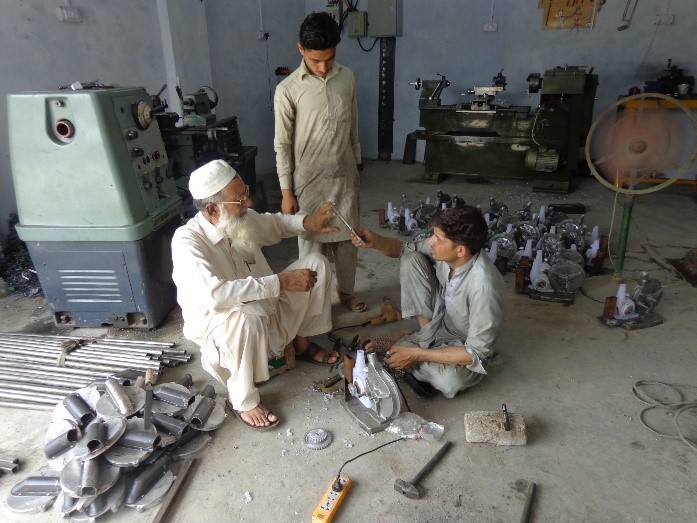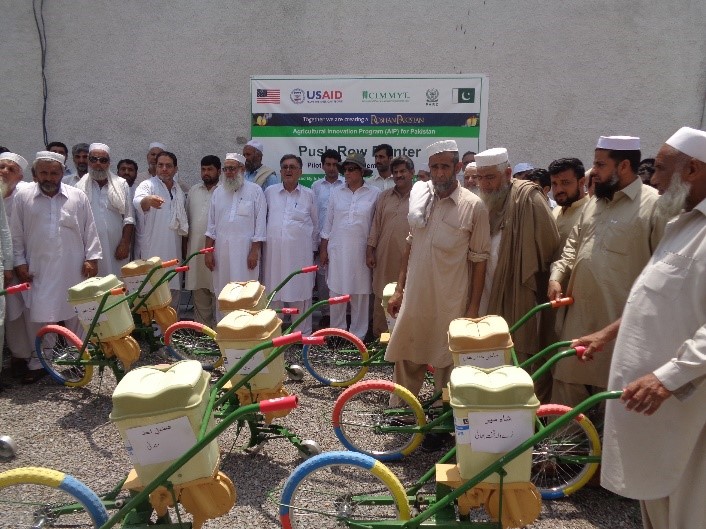
ISLAMABAD — Last year, the CIMMYT-Nepal office helped to introduce push row planters for small maize farmers in the Khyber Pakhtunkhwa Province (KP) in Pakistan. After a successful evaluation of these planters on more than 50 farmer fields in the districts of Nowshera, Mardan and Peshawar, CIMMYT collaborated this year with the Cereal Crops Research Institute (CCRI) and Petal Seed, a local seed company, for the local production of these planters.
In KP, maize is planted on 0.42 million hectares, and more than 60,000 farmers plant hybrid maize through traditional methods like broadcast and line sowing. These traditional methods are less precise – a lot of seed is wasted – and very labor intensive.
Push row planters have a vertical seed metering system that helps to place the maize seed at a proper plant-to-plant distance. They can also apply fertilizer and seed in one operation in tilled fields, thus saving labor costs, reducing planting time, and improving plant population and maize productivity.

The push row planters are manufactured and distributed locally on a cost sharing basis. Ameer Sani, a local manufacturer, assembles the planters in his workshop in Takht Bhai, in the district of Mardan. Farmers were satisfied with the performance of these locally manufactured planters, and on 21 July, 30 push row planters were distributed among smallholder maize farmers from the KP province during a farmer gathering in Mardan.
On this occasion, Iqbal Hussain, Director General of Agriculture Extension Services in KP, appreciated the efforts of USAID and CIMMYT, and advised the farmers that sharing the push row planters for maize planting would help to maximize benefits among the farming community in the village. Dr. Muhammad Imtiaz, Project Leader of the Agricultural Innovation Program for Pakistan (AIP), told the farmers that AIP would support the distribution of another 100 planters among KP farmers.
Raham Dil, a farmer from the village of Per Sadi in the district of Maran, not only used the planter on his own farm, but also offered it to 40 fellow farmers in his village and the surrounding areas, which resulted in more than 200 acres of maize planting.
 Capacity development
Capacity development 
